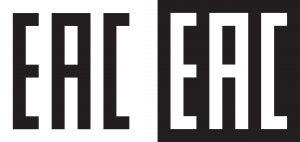Labeling rules
Every importer or manufacturer faces the labeling issue when it comes to the release[1] of the products.
Labeling is an information (signs, inscriptions, icons, symbols), which is listed on the packaging, label, tag and (or) on the accompanying documents and used for identification and consumer information. Labeling serves for the advertising, as well as improves the appearance and the image of the product, which ultimately has a positive effect on sales. But the main goal is to inform consumers that the product meets the quality and safety requirements.
Contents
Labeling components
Labeling must inform consumers about the product and contain (depending on the product):
- General information (product name, ingredients list, quantity, manufacturer, usage directions, expiration date, etc.);
- Trademarks (the label serves for the product differentiation as Apple, Google, etc.);
- Certification marks (EAC, CE, etc.);
- Registered trademarks signs (for instance, symbols "TM" or "R");
- Environmental labeling (whether the goods can be recycled, etc.);
- Special marking (icons, warning that the product contains toxic substances, flammable liquids, explosive materials);
- Barcodes;
- RFID-tags (as, for example, Smart Labels that serve for labeling of fur products;
- Etc.
Labeling is carried out by the manufacturer, supplier or importer of the goods, or by an organization that is responsible for the accuracy of the information and the quality of labeling (e.g., a representative of the foreign manufacturer). Product labeling must be clearly legible, as well as be indelible and persist until the expiration date of the product.
Labeling in the EAEU
The general labeling requirements are contained primarily in the EAEU Treaty of May 29, 2014. More detailed rules and requirements are specified in the relevant technical regulations of the Eurasian Economic Union (Customs Union).
For instance, TR CU "Technical regulation on food product labeling" provides guidance on application of information both for the consumer and for the transport packaging, as well as the rules of specifying such information as the expiration date of the goods, product ingredients, nutritional value, distinctive features of the goods (for example, GMO content) etc.
Another TR CU "On the safety of explosives and explosive-based products" establishes specific rules for the marking of packages of explosives and the explosives themselves. Thus, each Technical Regulation establishes its own specific guidelines for applying marks on the product, but all the goods produced in the territory of the Customs Union must be labeled with a single EAC mark on their packaging in all cases.
Common Mark of Conformity ("EAC" sign)
The EAEU product, that gets a certificate or a declaration of conformity, shall be labeled with the national conformity mark of the member state of the Union, where the respective document was issued. In the accompanying documents (technical passports, manuals, etc.) the registration number of the Certificate (or a Declaration) of conformity, its expiration date shall be specified as we as, other information not listed on the product itself or its consumer packaging. With this sign the manufacturer informs buyers that the product has been tested and certified and conforms to the quality standards of the Eurasian Economic Union.
Common Mark of Conformity sign is a combination of three stylized letters "E", "A" and "C", graphically designed using right angles; it, has the same height and width and, the exact square aspect ratio on bright or contrast background.
Marking of goods in the national certification system of the Russian Federation (GOST)
Now in Russia (as well as in other EAEU member states) national standards and regulations (for example GOST R) are still applicable for certain products (like lithium-ion batteries), which are marked with their own signs. There are 2 types of national conformity assessment adopted in the Russian Federation:
- The voluntary conformity assessment is carried out in the form of voluntary certification
- Mandatory conformity assessment is carried out in the forms of:
- declaration of conformity;
- mandatory certification.
Conformity GOST R sign
Products that meet all quality and safety requirements of GOST R certification system (GOST standards for Russia only), shall be marked with a symbol "PCT".
Voluntary certification systems
Laws of the Russian Federation allows organizations to create their own voluntary certification systems. Those who created such system, establish a list of objects for certification, and their characteristics as well as define the members of this certification scheme. The voluntary certification system may consider the use of its own conformity sign.
For example, a system of voluntary certification of natural and organic cosmetics operates in the Russian Federation.
Liability for false labeling
Goods subject to certification (or declaration) must contain all the necessary information for the consumer. Issuance of unlabeled goods is prohibited. This requirement are contained in both Russian Law and the legislation of EAEU. The laws of the Russian Federation requires the manufacturer (contractor, seller, authorized organization or authorized natural person, importer) to provide the necessary and accurate information on their products to the consumer even if they do not need to be certified.
False labeling as a violation of the consumer rights will entail in the form of fine with a confiscation (or without it) offense or without it or a criminal liability in the form orf imprisonment (with fine or without it) . In case of infringing the procedure of product labeling which caused damage or a threat of damage of life or health of citizens, property of individuals or organizations, state or municipal property, environment, life or health of animals and plants, an administrative fine of 700 thousand to one million rubles shall be imposed.
In addition, the legislation of the Russian Federation establishes criminal liability for violations of labeling rules in the form of imprisonment and/or a fine.
(In the case of the production, appropriation, storage, transportation goods without marking, committed on a large amount[2] or in the case of the commission of these acts by a group of persons on a preliminary conspiracy, or an organized group in especially big amount[3]
The responsibility for releasing/using unlabeled products in the territory of the other EAEU member states is established in accordance with the national legislation of the relevant member country.
References
- ↑ Here "release" is a supply or importation of goods in order to distribute on the territory of the Eurasian Economic Union (the EAEU).
- ↑ Large size means the value of unmarked food products is four hundred thousand rubles
- ↑ Especially big amount means the value of unmarked food products is more than one million five hundred thousand rubles
See also
- Technical Regulation of the Customs Union 022/2011 "On food product labeling"
- Technical Regulation of the Customs Union 028/2012 "On safety of explosives and explosive-based products"

